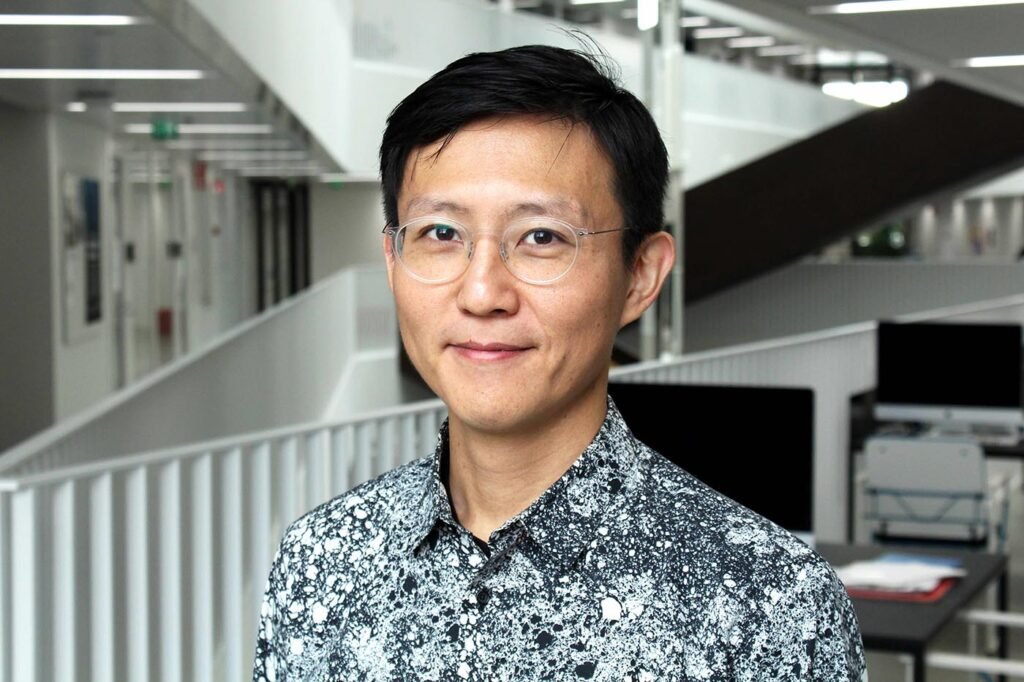Namkyu Chun
UCRF is running a ‘Member of the Month’ feature on this blog, where a member, selected at random from the membership database, is sent five questions to give us all an overview of our members. Our fourth participant is Namkyu Chun.
– How would you sum up your research / practice?
My name is Namkyu Chun (Doctor of Arts, MFA in Transdisciplinary Design). Throughout my cross-disciplinary experiences (i.e. fashion design/merchandising, journalism, non-profit fundraising, and design consulting) in multicultural contexts from East Asia to North/South Americas and the Nordic region, I have been interested in critically engaging with discourses on design practices and questioning the social role of the (fashion) design profession. Upon noticing the absences of both fashion designer’s voices in design research and the aspect of designing in fashion research, I have investigated distinctive features of fashion design that embrace meaning production of fashion and material production of clothes (see my doctoral dissertation). By rediscovering the ignored tradition of dressmaking due to social prejudices, my research aimed at recovering the social role of the fashion design profession that has been overshadowed by the image-making tendency from the industry. Further expanding my interest, currently, I am working as a postdoctoral researcher for the EU funded research project Creative Practices for Transformational Futures (CreaTures) while being involved in interdisciplinary education at Aalto University.
– How do you address fashion and sustainability in your work?
Creative arts and design practices, including fashion practice, have already demonstrated transformational potential in the area of social cohesion and environmental citizenship in many ways. However, they are often fragmented, poorly resourced and badly understood. With the CreaTures project, I am interested in discovering the power of existing yet often hidden creative practices to (re)orient the world towards social and ecological sustainability through addressing ways of being and lifestyles.
– What are the conflicts you have encountered around fashion and sustainability in your work?
I have encountered increased efforts to address sustainability in fashion driven by international and national level funding schemes, including the project that I am currently involved in. This is surely a positive sign as the issues are recognized and discussed to take actions in a larger scale. However, the contradiction is found when looking at less-developed countries. For instance, from my recent research on fashion sustainability in Brazil with my colleague Julia Valle-Noronha, a number of cases were studied. These organizations and entrepreneurs have been employing innovative approaches to respond to diverse sustainability issues without any support from the governments. The Western and more developed countries need to pay attention to plural approaches to fashion sustainability (this research will be published as a chapter in the edited book Sustainable Fashion in Latin America via Springer).
– What do you consider the key sources and cases when it comes to fashion and sustainability?
Continuing from the previous comment, I believe that the key sources for connecting fashion and sustainability are the acknowledgement of plural approaches and critical reflections to one’s own practice. The issues that the contemporary fashion system is facing, or has caused, are not simple; thus they require collaborative efforts embracing the knowledge and skills cultivated in both the local and the global scales. Simply implementing one approach from one context to the other is limited impacts even though it sounds truly innovative. Critically examining why and how certain fashion practices have been developed such ways can also help revisit the current operation of the fashion system. The humble and critical attitude toward our own practices may help us learn from each other and our own shortcomings. In summary, both approaches of reflecting ‘outside-in’ (plurality) and ‘inside-out’ (criticality) are imperative for fashion sustainability.
– Could you recommend some less known sources or cases you think should be more widely shared?
For this request, I can immediately suggest four cases that we studied for the above mentioned book chapter on sustainable fashion in Brazil: C(+)mas, beLEAF, FarFarm and Ateliê Vivo. To be fair to the society that I am physically located in, I want to introduce the inspiring work of Elina Laitinen from Finland. Instead of chasing the illusion of fashion, she turned her focus of creative practices towards local communities in Finland as an independent artist. Her work mostly deals with the aspect of time, in which fashion has distorted reality for its own benefit. Co-creating with the excessive amount of sunlight during the summer and the firm earth in Finland, she let the clothes to convey the passing of time in a longer period. This slow and natural process allows the clothes to ecome something more than fashion in a poetically sustainable manner.
Thank you very much for your insights Namkyu!

